I have always been fascinated by flexagons and have made several over the years, some more successful than others.
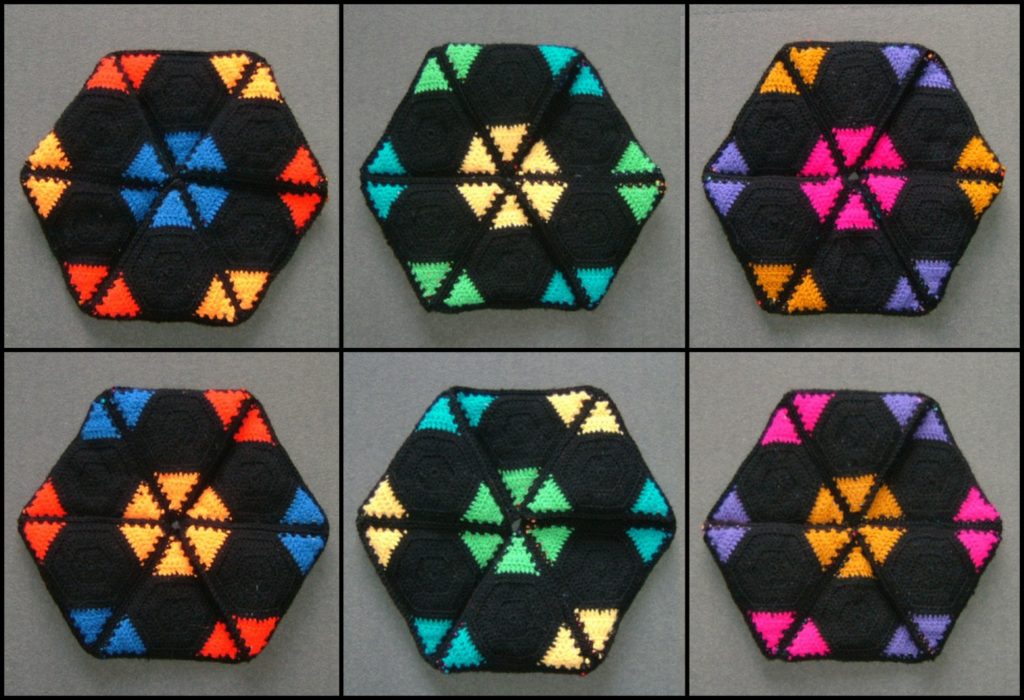
My first crochet hexaflexagon was about twenty years ago and, amazingly, it is still surviving. It isn’t the most comfortable cushion in the world but it is great fun. I can absolutely predict what will happen when it is presented to a group of kids (or adults!). First, it is used as a frisbee (It is quite aerodynamic.) One person will put it on their head and it isn’t long before someone discovers that a slight tug will pull it over the head and it will sit snuggly round the neck, like a ruff. Eventually they investigate its strange properties and discover that this there are six possible arrangements.
I made it for my own use but lots of people asked for a pattern. My crochet skills at that time, were fairly limited so the pattern was very basic. Perhaps that was a good thing as hundreds of people have used it since. It was in a book called Twists & Turns but it soon took on a life of its own and became a standalone pattern.
Over the years the names of these things seem to have changed. The flexagons here are now usually referred to as trihexaflexagons. They are made from nine triangles.

I was asked to make a more elaborate version, for an exhibition, so made a fluffy knitted one. (There have never been pattern instructions for this one.) It is basically the same as the crochet version but looks different because there is no ‘background colour’ in the triangles.

Eventually I made a knitted version quite similar to the crochet one – and added the instructions to the original pattern.
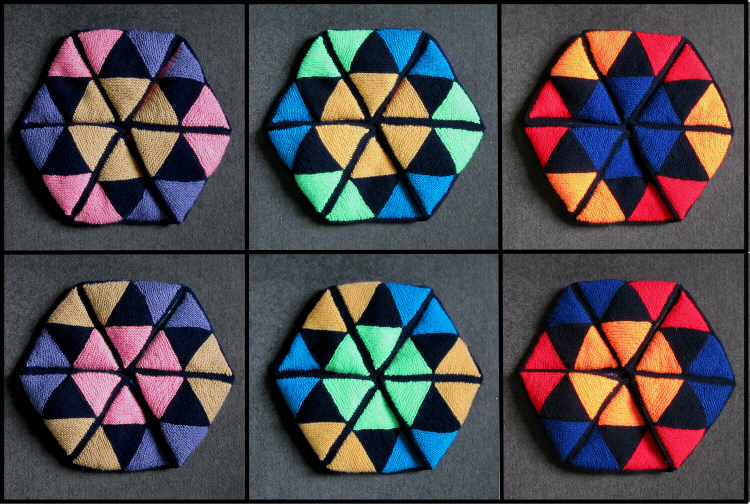
Another crochet variation (also included in the pattern) is the hexaflexacube. This isn’t a real mathematical thing. The construction is the same as the others but the colouring makes it look like a drawing of a cube. The crochet technique is a little more sophisticated than the earlier crochet version.
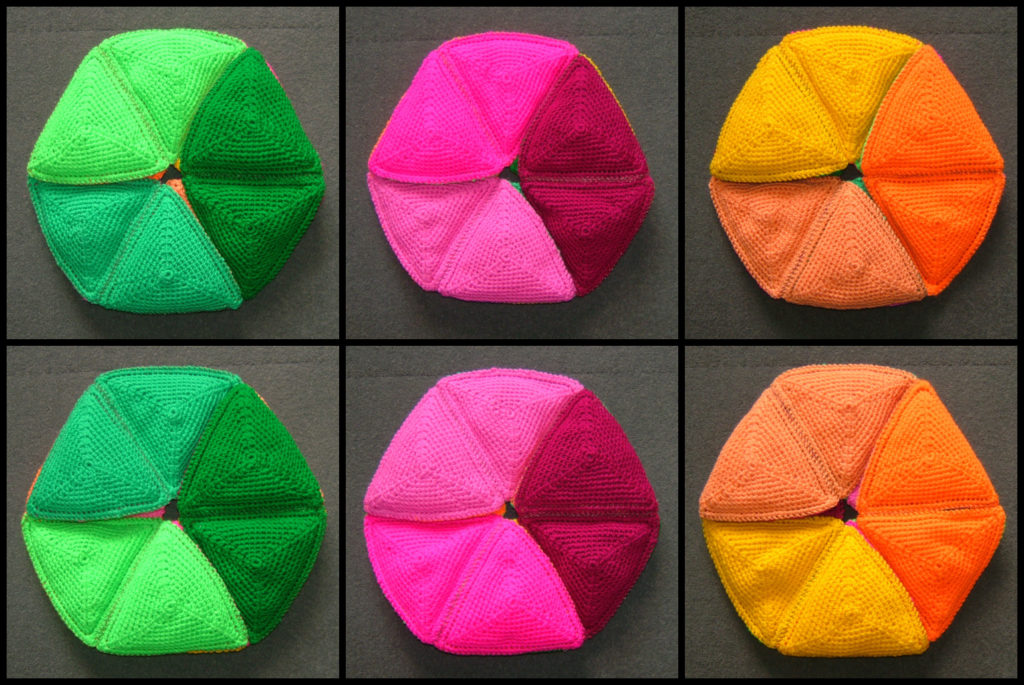
A few months ago I got ambitious when I came across a book, written by someone we worked with way back in MathsYear2000. Kjartan Poskitt published an ebook called Flexomania. It includes several different flexagons and he also has models to download, cut and fold yourself, and videos.
I have a book about polyhedra, including flexagons, that I bought about 25 years ago. I made some of them in paper but never thought about making the more complicated hexaflexagons in anything else. Kjartan’s video inspired me to think again. I think I always knew that adding extra thicknesses of knitting, crochet, and wadding, was not going to work but decided to try anyway. I learned a lot on the way that might come in useful in the future.
The flexagon, that now tends to be called a hexaflexagon, is made from 18 triangles which means that several thicknesses have to pile up on top of each other to make the hexagonal shape. (In some places you will find this one called hexahexaflexagon.)

I originally thought about making two – one knit, the other crochet – but that would have meant an awful lot of work. Plan B was to make half the triangles in knitting and half in crochet. They would have to be exactly the same size to fit together. The other complication was that they had to have a directional design because sometimes the triangles point one way, sometimes they point another, and it is important to be able to tell the difference.
Knitted Triangles
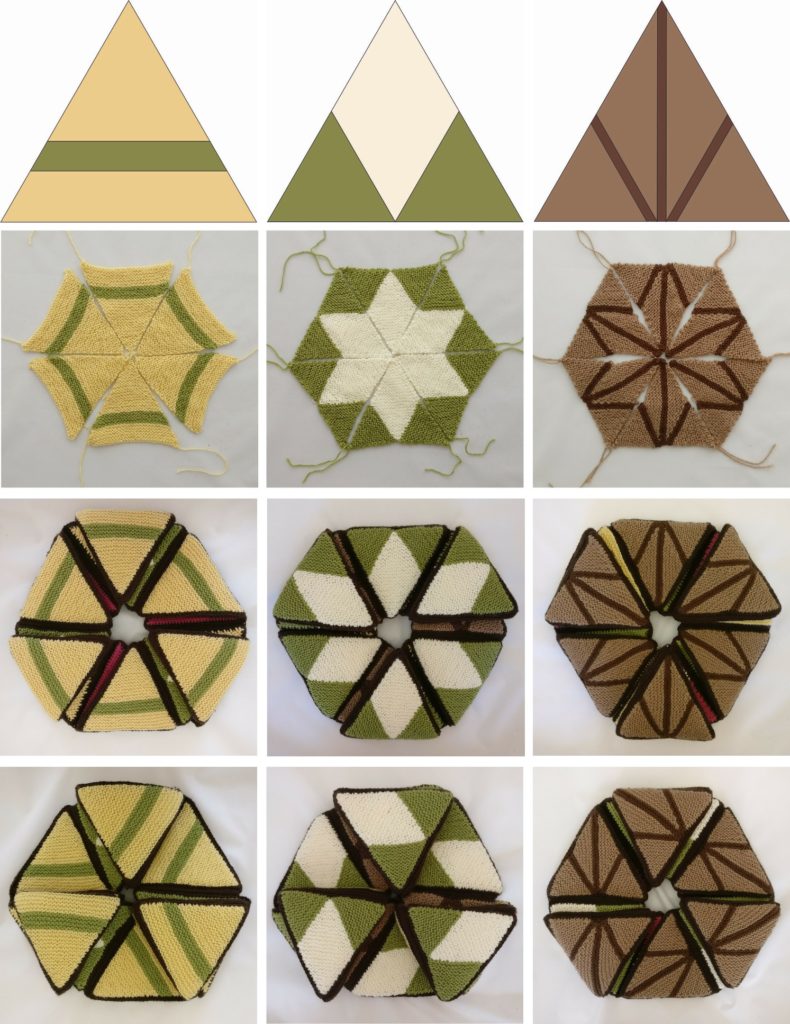
The triangles need enough space between them that they can twist and turn. That part was relatively easy but it does mean that the flexagon sometimes turns more than you want it to. The main difficulty is that the 18 triangles are sometimes (at their most extreme) three piles of five and three piles of one which makes a very uneven cushion.
Crochet Triangles
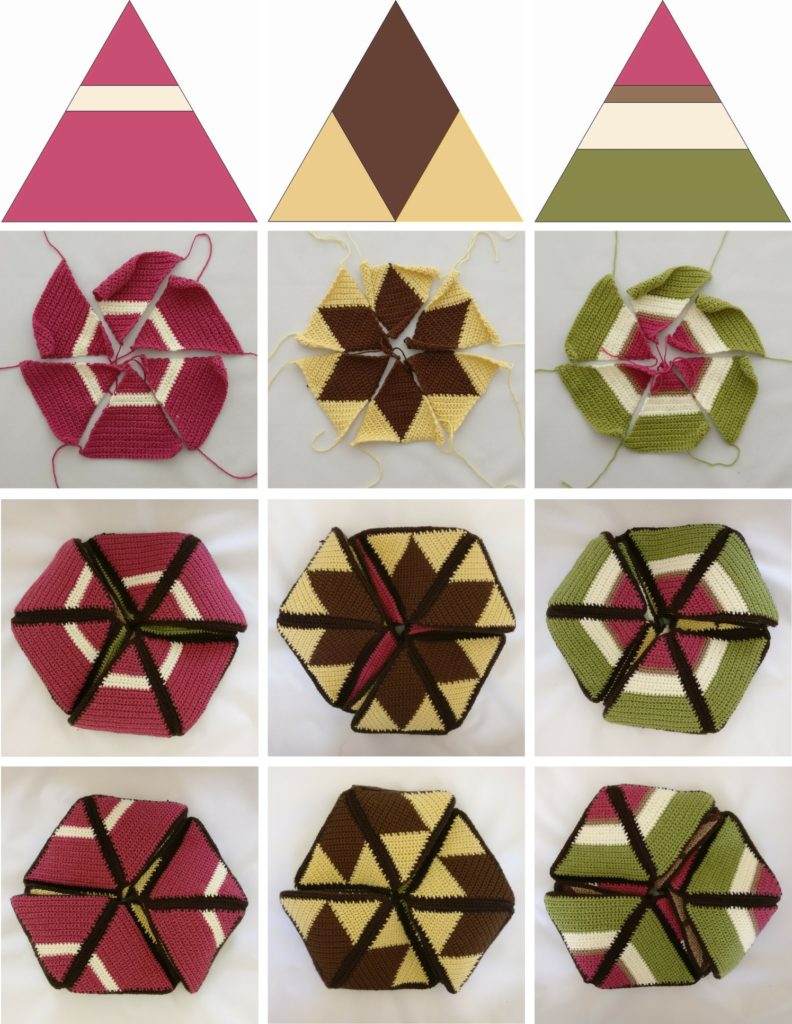
The cushion is difficult to fold – even for a person with big hands,
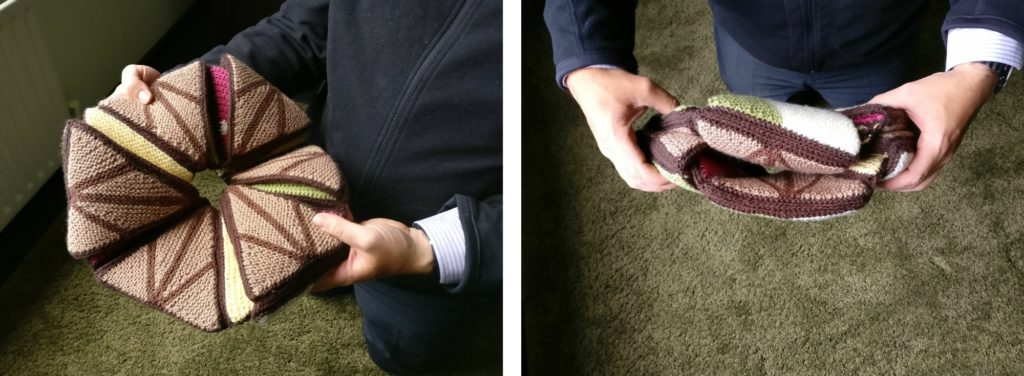
Recently I had reason to go back and look at the old Twists & Turns book. There were four more flexagon patterns languishing there so I decided to resurrect them. Calling them cushions is not really accurate. They are foldable, padded things that are fun to play with. They are not particularly comfortable and some of them are infuriating – hence the title of the free ebook is Frustrating Flexagon Cushions.
They are easy to make but time-consuming. They are all made from squares, rectangles, or triangles and can be knit, crochet, or fabric. Once you have made them, and start to fold, it often seems impossible to get back to where you started. Sometimes you know there is another coloured face inside there somewhere but you just can’t find it.
After playing with these ‘cushions’ again, I now think they should all be a bit smaller than the sizes in the pattern. They might not collapse quite as much. The ebook contains all four patterns plus paper versions to cut out and fold.
Face to Face is the easiest. It has fewest pieces so there is less to go wrong. It is made from 6 double-sided squares which are joined in such a way that the cushion has three different sides.
Box and Cox is made from 12 double-sided rectangles. It can be folded to reveal four different coloured faces, and also folded in half.
Flying Colours has 16 double-sided triangles. It can be folded into many different shapes and colour combinations. The photos show just a few of them.
Square-bashing is the most annoying of all. It looks as though it should be easy to manipulate but it certainly isn’t. It is made from 12 double-sided squares.
Download Frustrating Flexagon Cushions
… and, to add to the fun, the ebook includes all the eggsentricities that were in the original Twists & Turns, such as these:
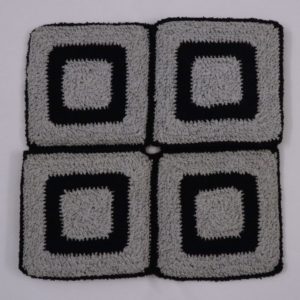
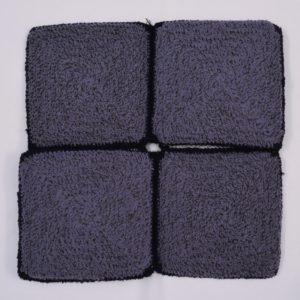
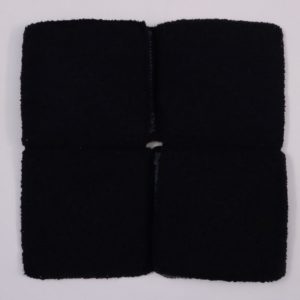
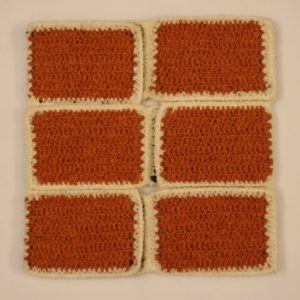
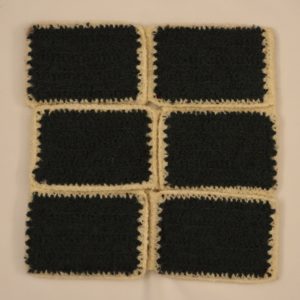
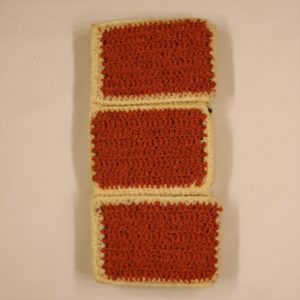
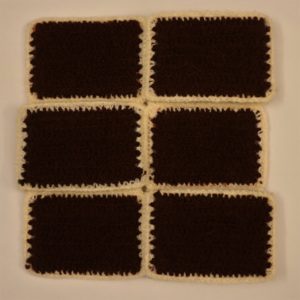
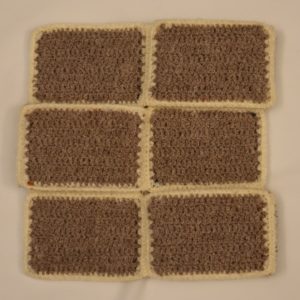
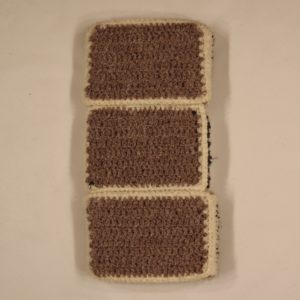
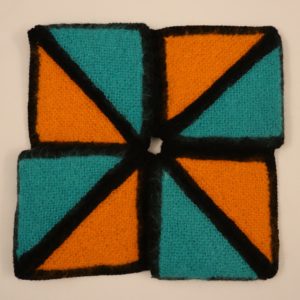
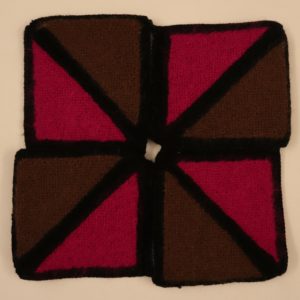
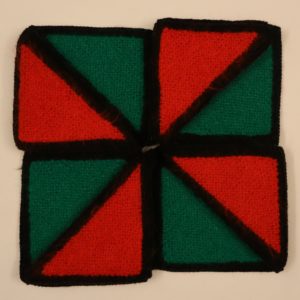
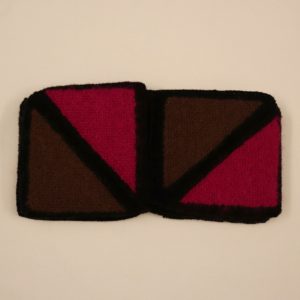
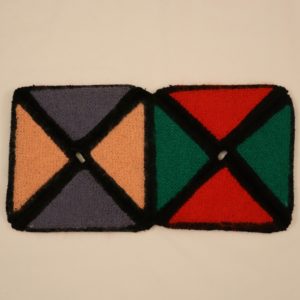
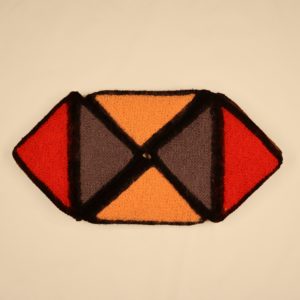
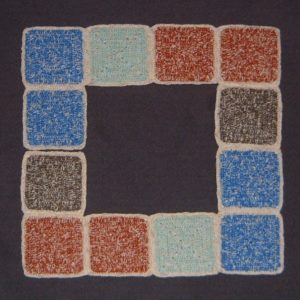
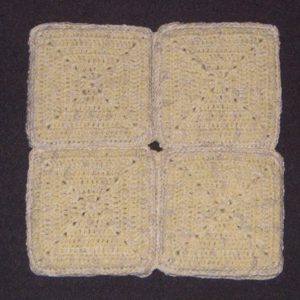
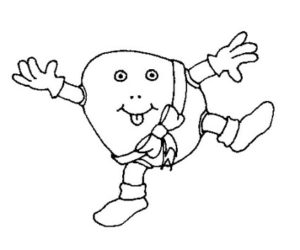
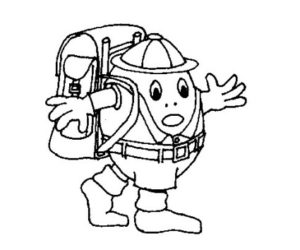
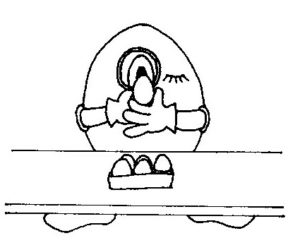
These are wonderful Pat. I particularly like the ones in shades of one colour. I made that original cushion of yours many years ago, long before I started designing my own stuff and was very pleased with it.
That must be a long time ago. I’m glad you liked it.